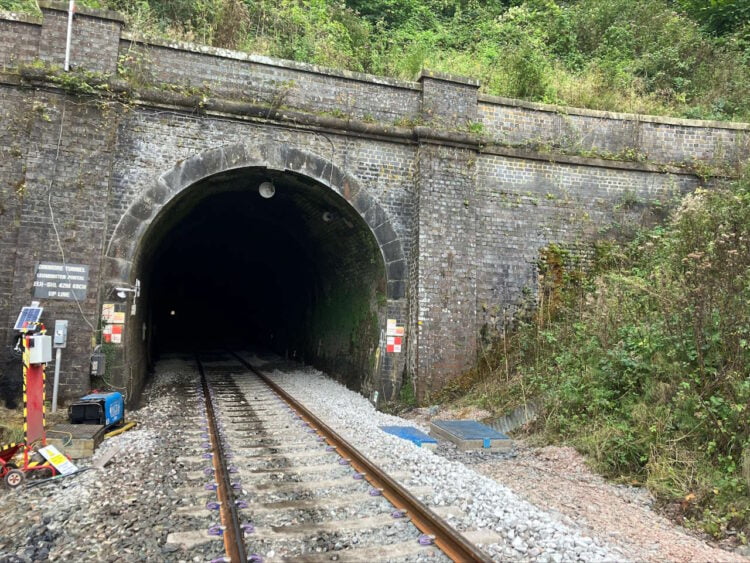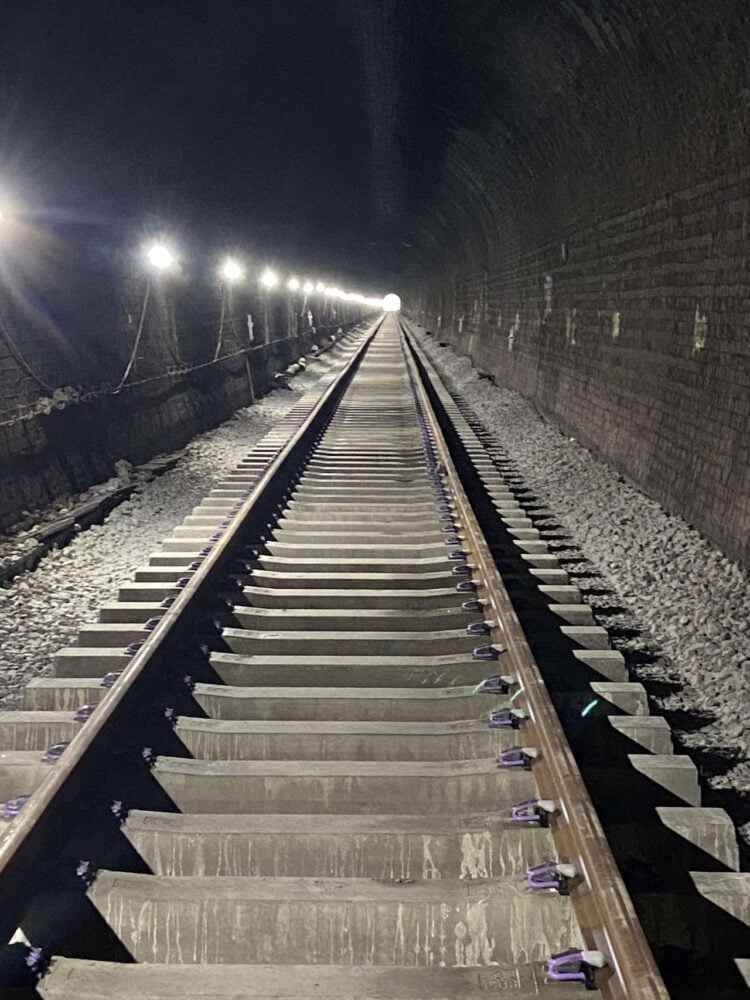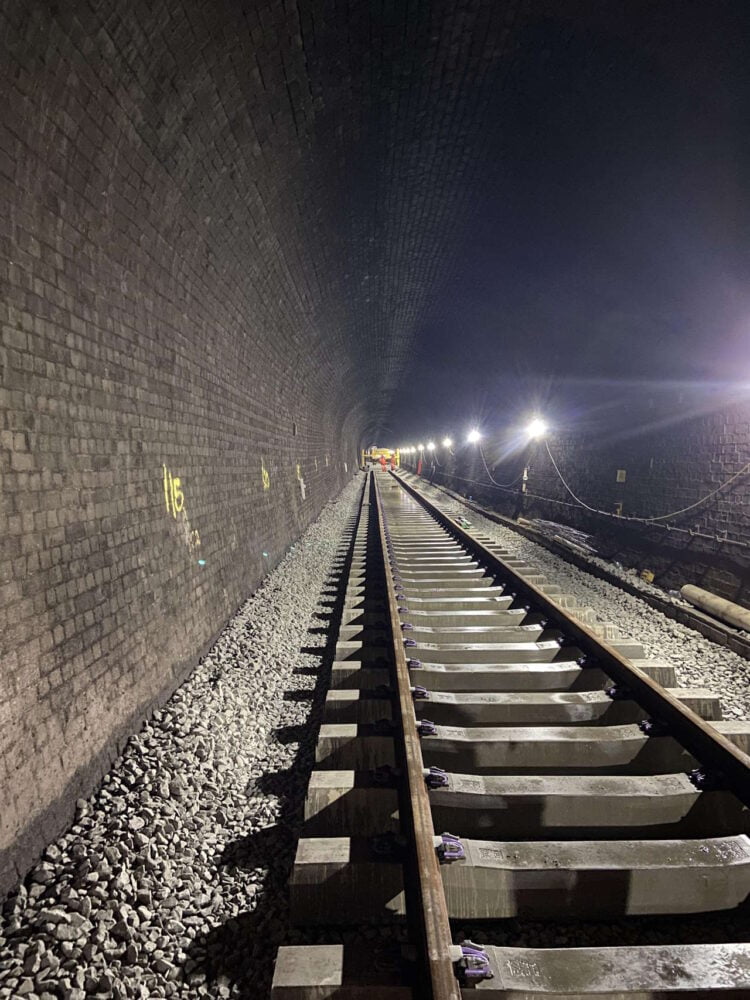Train services have resumed on the Marches Line between Newport and Shrewsbury after Network Rail completed work to renew the track inside the historic Dinmore Tunnel.
Whilst the work was being carried out, services were completely suspended for 11 days between Hereford and Shrewsbury to allow round-the-clock work in the tunnel, followed by a reduced service between Newport and Shrewsbury since the evening of last Saturday, 23 September,

Earlier this morning, Friday, 29 September, the line was completely reopened after engineers finished their work in the south-bound the tunnel, which was built in 1853. Whilst the tunnel was closed, a team of 450 engineers replaced the track, drainage, and ballast, working a total of 16,600 hours to replace 1,016 metres of track, 1,217 metres of drainage, and 4,333 tonnes of ballast.

The Marches line is an important rail link between South Wales and northwest England, and the track renewal will boost reliability of services on the line.
Further work is required using engineering trains to consolidate the new ballast, and this will take place overnight on Saturday nights between this Saturday, 30 September and 19 November.

Network Rail project director Brian Paynter said: “We would like to thank our passengers for their patience and understanding while this essential work took place.
“Unfortunately, the line between Hereford and Shrewsbury was closed for longer than planned when work near the tunnel overran on the 22 and 23 September and we would like to apologise for the additional disruption this caused.
“We d also like to thank our lineside neighbours for their patience while we worked close to their homes around the clock to safely complete the track renewal, which will secure the future of this vital transport link.
“The next time we return to renew this stretch of track, we expect it to be around the tunnel s 200th anniversary in 2053.”






Responses
It’s down to cost I’m guessing why they chose a complete closure rather than two individual line blockages. Much cheaper to get all materials down there in one go and all workers for one complete project rather than two individual projects. In British Rail days the customer would have been priority with a reduced service (single line working etc). Now the balance sheet takes priority as the cost of labour and materials is so high.
It can still be done if there is a will to do so, with temporary signalling arrangements, which is what would have been done in the past. That will seems to have deserted Network Rail though.
These types of track renewal are clearly vital and welcome. But why did Network Rail have to close BOTH tunnels at the same time?
Each tunnel is completely separate, so they could have been closed at different times, allowing a reduced railway service still to continue through the other tunnel. Network Rail seems to do more and more of these complete line closures that extend to multiple days, even weeks, and I fear it will just put people off from ever considering rail travel.
Probably because the signalling cannot support bi-directional working. It’s actually quite rare. So both tunnels would have had to be closed at the same time.
Single Line Working
Probably not allowed under health and safety these days
SLW was in place this last week. The first week, both lines were blocked so all the trains bringing in and taking away materials could do just that.